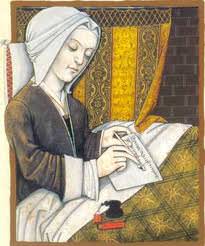Connections Between Body and Soul: The Asceticism of Medieval Saints
Hanson, Sarah E.
UCI Undergraduate Research Journal, Vol.12 (2009)
Abstract
The relationship between the body and the soul has been defined and redefined in Western European tradition since Plato due to its important role in answering political, social, religious, philosophical and medical questions. In late ancient and medieval Europe, saints’ lives recorded in hagiographical accounts were used to influence the religious community’s understanding of the relationship between the body and the soul. Late ancient saints’ lives displayed the religious piety of saints by detailing their ascetic practices. By the high and late Middle Ages women’s hagiographical accounts became particularly concerned with asceticism.
This study examines the contributions of female saints to the understanding of the relationship between the body and soul by looking specifically at the use of food-based ascetic practices in their accounts. The results of this study indicate a change in the medieval understanding of the body-soul relationship. Whereas saints’ accounts from late antiquity focused upon how the body influenced the state of the soul, by the high and late Middle Ages there appears to have been an increase in the focus on the soul’s ability to influence the body. This increased focus on the soul enabled women to overcome the inferiority ascribed to their physical bodies by medieval theorists and perhaps explains the growing number of female ascetics in the late Middle Ages.
Connections Between Body and Soul: The Asceticism of Medieval Saints
Hanson, Sarah E.
UCI Undergraduate Research Journal, Vol.12 (2009)
Abstract
The relationship between the body and the soul has been defined and redefined in Western European tradition since Plato due to its important role in answering political, social, religious, philosophical and medical questions. In late ancient and medieval Europe, saints’ lives recorded in hagiographical accounts were used to influence the religious community’s understanding of the relationship between the body and the soul. Late ancient saints’ lives displayed the religious piety of saints by detailing their ascetic practices. By the high and late Middle Ages women’s hagiographical accounts became particularly concerned with asceticism.
Click here to read this article from the UCI Undergraduate Research Journal
Subscribe to Medievalverse
Related Posts